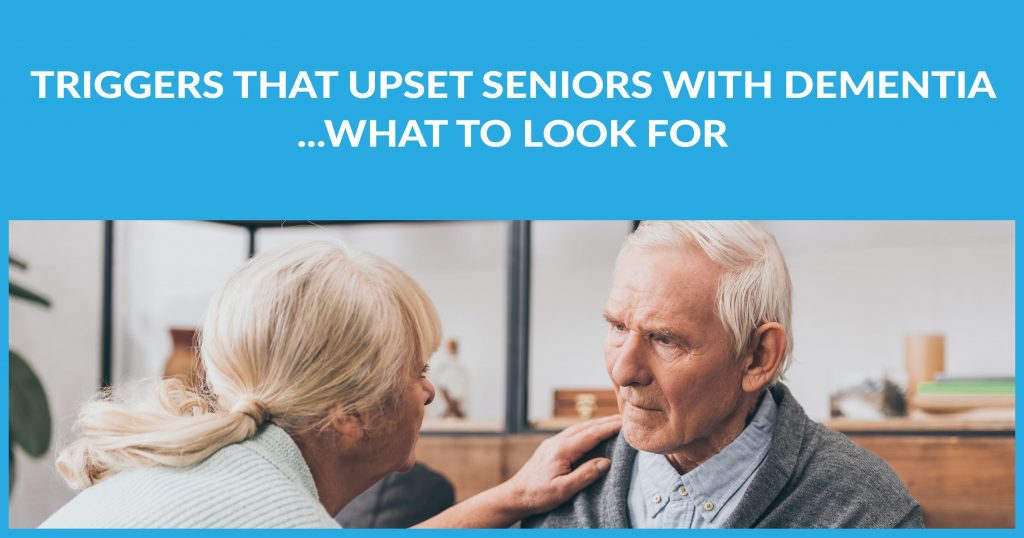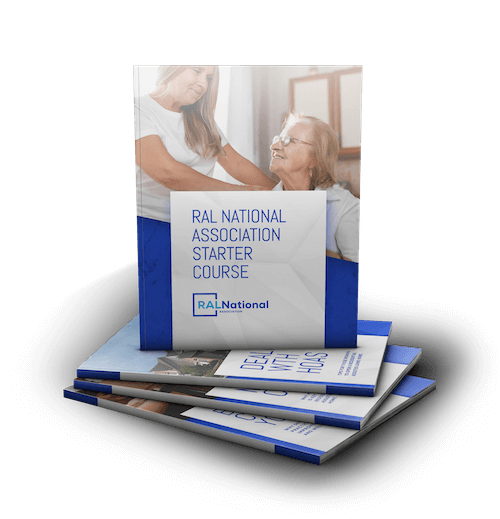[vc_row css_animation=”” row_type=”row” use_row_as_full_screen_section=”no” type=”full_width” angled_section=”no” text_align=”left” background_image_as_pattern=”without_pattern”][vc_column][vc_empty_space][vc_column_text]
THE IMPORTANCE OF MEMORY CARE IN RAL HOMES
[/vc_column_text][vc_empty_space height=”16px”][vc_column_text]When seniors show signs of extreme confusion, frustration, and emotional distress, caregivers need to know how to handle such sensitive situations. These are often symptoms of dementia. Understanding their needs and patterns of behavior sheds light on how to care for dementia care residents. Various scenarios range from seniors repeatedly echoing the same words, “I want to go home,” “When are we leaving,” and “Where are we going?” Some seniors refuse to eat, reject participation in daily activities and neglect hygiene. The absolute best care for residents wrestling with symptoms of dementia consists of professionally proven strategies that help benefit both seniors and staff.[/vc_column_text][vc_empty_space height=”16px”][vc_column_text]In order to stress the significance of dementia care, step-by-step RAL readers are encouraged to embrace the concepts outlined in the following 7 sections:[/vc_column_text][vc_empty_space height=”16px”][vc_column_text]
- The Importance of Memory Care In RAL Homes
- What Is Dementia?
- Identifying Dementia Behavior
- Triggers That Upset Residents with Dementia
- Understanding Behavioral Expressions
- Actions and Responses to Dementia
- Reliable RALNA Dementia Care Resources
[/vc_column_text][vc_empty_space height=”16px”][vc_column_text]Caregivers of residents with dementia must be well-trained and prepared to deal with specific duties and difficulties. It’s very important to recognize the internal struggles of individuals with dementia and realize that communicating basic needs is not an easy task for them. Proper assisted living care starts with understanding the definition and diagnosis of dementia and what symptoms to be aware of. Afterward, caregivers will better understand how to respond to triggers that upset seniors with dementia care.[/vc_column_text][vc_empty_space height=”16px”][vc_column_text]
WHAT IS DEMENTIA?
[/vc_column_text][vc_empty_space height=”16px”][vc_column_text]Dementia is a progressive condition that causes mental deficits, of which there is no cure. Alzheimer’s disease is the most common form of dementia. There is also vascular dementia, alcohol-related dementia, Parkinson’s dementia and frontotemporal dementia. The correct dementia diagnosis determines the right medicines, remedies, and support. Alzheimer’s disease accounts for 60-80 percent of dementia cases. Ultimately, dementia is marked by memory loss, impairment, aphasia and the inability to plan and initiate complex tasks.[/vc_column_text][vc_empty_space height=”16px”][vc_column_text]Dementia is not merely the loss of memory. It is diagnosed when both memory and another cognitive function are severely affected. Together, these symptoms interfere with a person’s ability to carry out daily activities. Dementia is a condition that affects both memory and thinking. More than 44 million people worldwide suffer from a dementia-related diagnosis. In America, 1 in 10 people over the age of 65 has dementia. The typical life expectancy after a dementia diagnosis is 4-to-8 years, which currently affects over 5 million Americans. As a result, these seniors are in need of assisted living, with an emphasis on memory care. [/vc_column_text][vc_empty_space height=”16px”][vc_column_text]
IDENTIFYING DEMENTIA BEHAVIOR
[/vc_column_text][vc_empty_space height=”16px”][vc_column_text]Residential Assisted Living National Association (RALNA) provides an easy and detailed 3-step approach. This approach helps caregivers to effectively identify common dementia-related behaviors. Caregivers can carefully assess the concerns of each resident based on the questions associated with each step. This thorough process will empower caregivers to accurately identify dementia behaviors, explore solutions and try different responses. These steps will enable staffers to properly assess each episode associated with identifying dementia behavior.[/vc_column_text][vc_empty_space height=”16px”][vc_column_text]
3-STEP APPROACH
[/vc_column_text][vc_empty_space height=”16px”][vc_column_text]
1. HOW TO Examine the Behaviors
[/vc_column_text][vc_empty_space height=”16px”][vc_column_text]
- What was the behavior?
- Was it harmful?
- Did something trigger it?
- What happened immediately after?
- Could something be causing the person pain?
- Could this be related to medications or illness? (Consult a physician).
[/vc_column_text][vc_empty_space height=”16px”][vc_column_text]
2. HOW TO Explore Potential Solutions
[/vc_column_text][vc_empty_space height=”16px”][vc_column_text]
- Are the person’s needs being met?
- Can we adapt the surroundings to increase the comfort of the person?
- How can you change your reaction or approach?
[/vc_column_text][vc_empty_space height=”16px”][vc_column_text]
3. HOW TO Try Different Responses
[/vc_column_text][vc_empty_space height=”16px”][vc_column_text]
- Did your new response help?
- Do you need to explore other potential solutions? (If so, what can you do differently)?
[/vc_column_text][vc_empty_space height=”16px”][vc_column_text]
TRIGGERS THAT UPSET RESIDENTS WITH DEMENTIA
[/vc_column_text][vc_empty_space height=”16px”][vc_column_text]Seniors suffering from dementia are often upset easily. It is common for these residents to lash out in anger at caregivers and loved ones. This anger is displayed in all sorts of ways. Some seniors scream, pace the room repeatedly, while others ask repetitive questions. Violent behavior is rare, but 20-percent of dementia patients react with force when triggered. It’s not unusual for caregivers to experience difficulties processing this type of aggressive behavior. Building relationships and understanding more about each resident and their dementia can help. This interpersonal strategy preserves the dignity of both the caregiver and the resident. It is important to recognize that residents with dementia aren’t being difficult for the sake of attention. These individuals are dealing with internal struggles, complicated emotions and scattered thoughts in which they are unable to communicate. Among other cognitive declines, diminishing verbal skills is a common part of dementia. Memory loss caregivers take time to routinely evaluate triggers that cause distress. This equips RAL staffers with the needed tools to better communicate and predict future upsets. Understanding these triggers makes life easier for residents and caregivers.[/vc_column_text][vc_empty_space height=”16px”][vc_column_text]
13 Potential Triggers That Upset Seniors with Dementia
[/vc_column_text][vc_empty_space height=”16px”][vc_column_text]
- Loud and crowded RAL homes that over-stimulate the senses;
- Unfamiliar faces, including too many caregivers;
- Environmental changes, such as relocating, visiting strange places and new decorations;
- Hunger, thirst or need of a restroom;
- Sudden unforeseen approaches when peripheral vision is impaired;
- Loud forceful communication;
- The invasion of private space in one’s absence;
- Misunderstanding nearby conversations, questions or directions;
- Startling loud noises and voices;
- Uncomfortable environments based on room temperatures;
- Feeling demeaned or disrespected;
- Low self-esteem caused by inabilities to communicate and care for themselves;
- Side effects and reactions to various medications.
[/vc_column_text][vc_empty_space height=”16px”][vc_column_text]
UNDERSTANDING BEHAVIORAL EXPRESSIONS
[/vc_column_text][vc_empty_space height=”16px”][vc_column_text]Keep a working journal of all triggers that you pinpoint and maintain an awareness of behavior expressions. Behavioral expressions are defined by a person’s expression when experiencing unmet needs and desires. Expressions are a part of human nature. We all exhibit behavioral expressions, especially when faced with unforeseen or stressful situations. Discover ways to help residents feel safe, secure and heard.[/vc_column_text][vc_empty_space height=”16px”][vc_column_text]This is accomplished by observing, asking open-ended questions, and creating structured daily routines. When caring for residents with dementia, it is important to listen, observe, think and then respond with a calm voice. Consistent mindfulness of behavioral expressions is often the most efficient way to anticipate triggers. This means caregivers must be observant individuals, along with a desire to care for the needs of others.[/vc_column_text][vc_empty_space height=”16px”][vc_column_text]
ACTIONS AND RESPONSES TO DEMENTIA
[/vc_column_text][vc_empty_space height=”16px”][vc_column_text]Dementia, especially Alzheimer’s disease, can cause residents to act unpredictably. Some individuals with dementia become anxious or aggressive, and others initiate a variety of different actions. Many misinterpret what they hear. As a result, their misunderstandings lead to frustration and tension, particularly toward the caregiver. It’s valuable to immediately understand why a resident is acting in a specific way.[/vc_column_text][vc_empty_space height=”16px”][vc_column_text]In addition to the 3-Step Approach referenced earlier, be prepared to identify and respond to the following 7 most common behaviors:[/vc_column_text][vc_empty_space height=”16px”][vc_column_text]
- Anger and Aggression
- Anxiety and Agitation
- Forgetfulness and Confusion
- Repetitive Actions
- New Suspicions
- Wandering and Getting Lost
- Trouble with Sleep
[/vc_column_text][vc_empty_space height=”16px”][vc_column_text]
RESPONSE METHODS FOR 7 MOST COMMON BEHAVIORS
[/vc_column_text][vc_empty_space height=”16px”][vc_column_text]
1. ANGER AND AGGRESSION
[/vc_column_text][vc_empty_space height=”16px”][vc_column_text]Aggressive behavior can be verbal or physical. Some residents respond with screaming and shouting and others resort to hitting and pushing. Figure out what is causing the anger. Rule out pain – it can agitate aggressively amongst residents with dementia. Think about what happened immediately before the episode. Focus on their feelings, not the facts, while remaining positive and reassuring. When residents are angry and aggressive, speak slowly using soft tones. Limit distractions to avoid an ongoing situation, even if it means relocating others to a safe area. Remember, relaxing music often helps. Do not hesitate to call 911 in emergency situations. When you contact 911, inform the responders that the person has dementia, which causes them to act aggressively.[/vc_column_text][vc_empty_space height=”16px”][vc_column_text]
2. ANXIETY OR AGITATION
[/vc_column_text][vc_empty_space height=”16px”][vc_column_text]There are countless reasons why residents with dementia become anxious or agitated. Consider the surroundings, time of day, and recent occurrences to determine the trigger. Always evaluate for a potential source of pain, hunger or need for sleep. Reaction to medication is a frequent cause of anxiety and agitation. Listen to their frustration, in order to provide reassurance and support. Modify the environment by decreasing any noise and distractions, engage music and other relaxing activities. If possible and whenever necessary, relocate the resident by going for a walk or a ride.[/vc_column_text][vc_empty_space height=”16px”][vc_column_text]
3. FORGETFULNESS AND CONFUSION
[/vc_column_text][vc_empty_space height=”16px”][vc_column_text]People, places and things often become unfamiliar to residents with dementia. Some residents may even forget relationships – they’ll call family members by other names. Others forget the significance of a fork or how to use a pen. Stay calm and respond with brief explanations. Don’t overwhelm residents with complicated responses. Instead, try to clarify with photos and other thought-provoking reminders of people, places and things. Offer suggestions as a correction to avoid sounding like you are scolding. For example, try responses like, “I thought it was a fork,” or “I think he is your grandson Peter.”[/vc_column_text][vc_empty_space height=”16px”][vc_column_text]
4. REPETITIVE ACTIONS
[/vc_column_text][vc_empty_space height=”16px”][vc_column_text]Dementia residents sometimes do and say things repeatedly. In most cases, these individuals are likely looking for comfort, security, and familiarity. These actions are rarely harmful but can be stressful for the caregiver. Look for a cause behind the repetitive behavior. Focus on feelings rather than reacting to repetitive actions. Turn the action or behavior into an activity. If the resident is rubbing a hand across the table, provide a cloth and ask for help with dusting. Give answers repeatedly, several times if necessary. It may help to write information down and post it in a prominent location. Engage residents in activities, like walking or working on puzzles, to eliminate the possibility of boredom. Memory aids like notes, photographs, clocks, and calendars also help residents avoid dementia-related repetitive actions.[/vc_column_text][vc_empty_space height=”16px”][vc_column_text]
5. NEW SUSPICIONS
[/vc_column_text][vc_empty_space height=”16px”][vc_column_text]Unusual perspectives and conclusions often stem from memory loss and confusion. Residents may become suspicious of individuals around them. They may even accuse people of theft, infidelity, and other improper behavior. It is not uncommon for individuals with dementia to misinterpret what they’ve seen or heard. Don’t take offense. Don’t argue and do not try to convince them otherwise. Instead, let the resident know you care. As opposed to offering lengthy explanations that can be difficult to process and more frustrating, switch the focus. Afterward, duplicate any lost items. If the person routinely searches for a specific item, have several available.[/vc_column_text][vc_empty_space height=”16px”][vc_column_text]
6. WANDERING AND GETTING LOST
[/vc_column_text][vc_empty_space height=”16px”][vc_column_text]Wandering and getting lost is common among individuals with dementia. Individuals in RAL homes may even attempt to return to their previous houses, places of work, or old schools. Increased supervision is always warranted for residents with dementia. Encourage daily activities to reduce anxiety and restlessness which discourages wandering. If a resident shows strong interest in getting out of the house, consider an accompanied walk. Gardening is also a great outdoor activity to help distract residents from the urge to wander off. [/vc_column_text][vc_empty_space height=”16px”][vc_column_text]
7. TROUBLE WITH SLEEP
[/vc_column_text][vc_empty_space height=”16px”][vc_column_text]Difficulty sleeping and erratic changes in sleep schedules are common in individuals with dementia. Make a comfortable environment by being mindful of comfortable nighttime temperatures. Use adjustable nightlights. Create a regularly scheduled routine for waking up, meals, daytime naps and going to bed. Include time for light exercise, because physical exertion often leads to restful nights. Avoid stimulants like caffeine and nicotine, which affects quality sleep. Discourage late-night television, which can also be stimulating. Refer residents to their doctors for possible solutions if sleep disturbances continue.[/vc_column_text][vc_empty_space height=”16px”][vc_column_text]
RELIABLE RALNA DEMENTIA CARE RESOURCES
[/vc_column_text][vc_empty_space height=”16px”][vc_column_text]If a senior becomes forgetful and frustrated with the day-to-day task, request a screening from a medical professional. Doctors utilize several tools to complete dementia assessments for their patients. Every 66 seconds someone in the United States develops dementia. RALNA is helping the assisted living homes prepare for a rapid influx of baby boomers. In 2031, when the first wave of baby boomers reach age 85, more than 3 million people will have dementia. By 2050, approximately 16 million Americans will suffer from dementia. The projected cost to care for these individuals is expected to exceed $1.1 trillion, compared to the $259 billion spent in 2017.[/vc_column_text][vc_empty_space height=”16px”][vc_column_text]RALNA is the largest assisted living association in America. The nationwide organization advocates for residential assisted living owners and operators. It provides support with legal expertise, continued education, national marketing, and group purchasing power. As a positive voice in the industry, RALNA publishes a member-based newsletter addressing critical issues facing RAL homes, including dementia care training. RALNA understands the significance of memory care training for RAL homes. This nationwide organization is the driving force that is navigating RAL industry leaders to successful best practices.[/vc_column_text][vc_empty_space][vc_column_text]
This Information is available as a downloadable PDF in the Continued Education section of your Member Dashboard.
Click below to download this guide and see others like it.
[/vc_column_text][vc_row_inner row_type=”row” type=”full_width” text_align=”center” css_animation=””][vc_column_inner][vc_empty_space height=”16px”][button target=”_self” hover_type=”default” text_align=”center” text=”Take Me There” link=”https://ralna.org/continuededucation/#staffretention” color=”#ffffff” hover_color=”#29abe2″ background_color=”#29abe2″ hover_background_color=”#ffffff” border_color=”#29abe2″ hover_border_color=”#29abe2″][/vc_column_inner][/vc_row_inner][vc_empty_space][vc_separator css_animation=”fadeIn” type=”normal” color=”#eaeaea”][vc_empty_space][vc_row_inner row_type=”row” type=”full_width” text_align=”left” css_animation=””][vc_column_inner width=”1/6″][/vc_column_inner][vc_column_inner width=”2/3″][vc_single_image image=”99″ img_size=”medium” alignment=”center” qode_css_animation=””][vc_empty_space height=”10px”][vc_column_text]
If you found the information on this article valuable, you’ll find enormous benefits by becoming a member of our community. Visit this page to become a RALNA Member.
[/vc_column_text][/vc_column_inner][vc_column_inner width=”1/6″][/vc_column_inner][/vc_row_inner][/vc_column][/vc_row]











